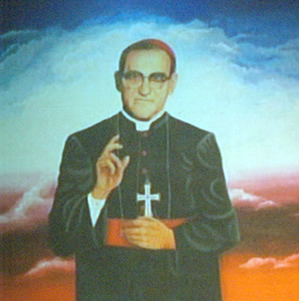
Controversial Portraits of Queer Priests and Nuns Ignite Outrage in Mexico

# Controversial Art and Religious Sensitivities: The Debate Over *La Venida del Señor* in Mexico City
A recent art exhibition in Mexico City has sparked heated controversy, igniting a debate over artistic freedom, religious sensitivity, and LGBTQ+ representation. The exhibition, *La Venida del Señor* (*The Coming of the Lord*), by Mexican artist Fabián Cháirez, showcases a series of provocative paintings that depict Christian priests and nuns in highly sexualized and queer representations.
## The Artist and His Vision
Fabián Cháirez is well known for subverting traditional gender roles and intertwining themes of sexual diversity in retellings of Mexican history and religious iconography. His new exhibition, which opened on February 5, 2024, at the Academia de San Carlos Centro Historico—an institution affiliated with the National Autonomous University of Mexico (UNAM)—continues this practice by exploring religious ecstasy as analogous to sexual ecstasy.
Cháirez argues that these two concepts, often considered opposites, have more in common than conventional thinking suggests. In his words, “*It’s an exercise in which I make a comparison between religious ecstasy and sexual ecstasy.*”
## Public Reaction: Mixed Responses and Protests
While some individuals and art enthusiasts applaud Cháirez’s work as a celebration of free artistic expression and LGBTQ+ visibility, others—particularly conservative Christian groups and right-wing political figures—have condemned the exhibition as offensive and blasphemous.
The Mexican chapter of the Association of Christian Lawyers (AAC) responded forcefully to *La Venida del Señor*. The organization filed a legal complaint with Mexico’s National Council to Prevent Discrimination (CONAPRED), arguing that the artwork violates the right to practice one’s faith without being subjected to attacks or ridicule. Their petition, backed by over 9,000 digital signatures, cites Article 24 of the Mexican Constitution, which protects religious freedom.
Several right-wing public figures, including Senator Lilly Téllez and Luis Felipe Calderón Zavala (son of former President Felipe Calderón), have voiced their disapproval online. Additionally, Eduardo Verástegui, an actor turned far-right political figure, has criticized the exhibition as emblematic of what he perceives as increasing “Christianophobia” in Mexico.
On February 14, Catholic protesters demonstrated outside the Academia de San Carlos, displaying signs that read “Blasphemy is not art.” Religious groups continued their opposition on February 19 by symbolically closing the exhibition space with caution tape and wearing t-shirts with the message, “*No ofendas mi fe en nombre del arte*” (“Don’t offend my faith in the name of art”). Despite these protests, interactions between demonstrators and museum staff have remained largely peaceful.
## Artistic Freedom vs. Religious Sensitivity
The debate surrounding *La Venida del Señor* taps into long-standing tensions between freedom of expression and religious respect. Some argue that art should challenge social and cultural norms, even if it discomforts certain groups. Cháirez himself has emphasized that art should encourage dialogue rather than censorship: “*There is a double standard from the public that feels offended,*” he noted, referring to the unusually strong backlash from far-right groups.
However, critics insist that such provocative depictions of religious figures cross a line, arguing that they demean spiritual traditions and alienate religious communities. Conservative critics believe that attacking deeply held religious beliefs under the guise of “artistic freedom” is unacceptable in an increasingly polarized cultural landscape.
## The Institutional Response
UNAM, the institution hosting Cháirez’s exhibition, has taken security measures to protect visitors and museum staff in response to the protests. Despite ongoing opposition, there are no plans to cancel the exhibition, which is viewed as a significant stance in support of artistic freedom.
Cháirez views the controversy as indicative of broader social conflicts in Mexico—particularly over LGBTQ+ rights and the role of the Catholic Church. He argues that energy spent protesting art could be better directed toward addressing real social issues, such as allegations of sexual abuse within religious institutions.
## A History of Controversial Art
This is not the first time Cháirez’s work has stirred public outrage. In 2019, his painting of Mexican revolutionary leader Emiliano Zapata—portrayed nude in a suggestive pose with a pink sombrero—faced intense criticism from farmworker unions and conservatives. Amid backlash, Mexico’s Museo del Palacio de Bellas Artes opted to keep the painting on display but removed it from promotional materials.
Similarly, *La Venida del Señor* has reignited age-old debates about who controls cultural narratives, how far artistic expression can go, and where respect for religious belief meets the rights of marginalized communities.
## Conclusion: A Cultural Crossroads
The controversy surrounding *La Venida del Señor* highlights an ongoing cultural divide in Mexico. On one hand, the exhibition represents a fight for freedom of expression, LGBTQ+ visibility, and the right of artists